Introduction
Gait analysis is a scientific method of evaluating movement patterns, kinesiology and examining the range of joint movement and muscle function during walking. Gait analysis is used to assess, plan, and improve the movement patterns of people with disabilities. Rehabilitation movement specialists and physiotherapists use this method to analyze the movements of professional athletes and their injured clients. This type of kinesiology can be effective for analyzing injuries in the skeletal and muscular structure, and professional experts can prepare more suitable movement programs and exercises for their clients.
Definitions of key terms and concepts
For better understanding Gait analysis Need to get to know some We have key terms and concepts of this science which are:
• Key Events
• Separation of the toes from the surface of the treadmill (Toe-off)
• Heel hits the treadmill(Heel strike)
• Gait Cycle Phase
• Stance Phase
• Swing Phase
• Cycle (Stride) Time
• Double Support
• Single Support
• Step Time
• Step Count
• Step Length
• Stride
• Stance Time
• Swing Time
• Cadence
In the following section, we will explore these concepts in greater detail.
Gait Events:
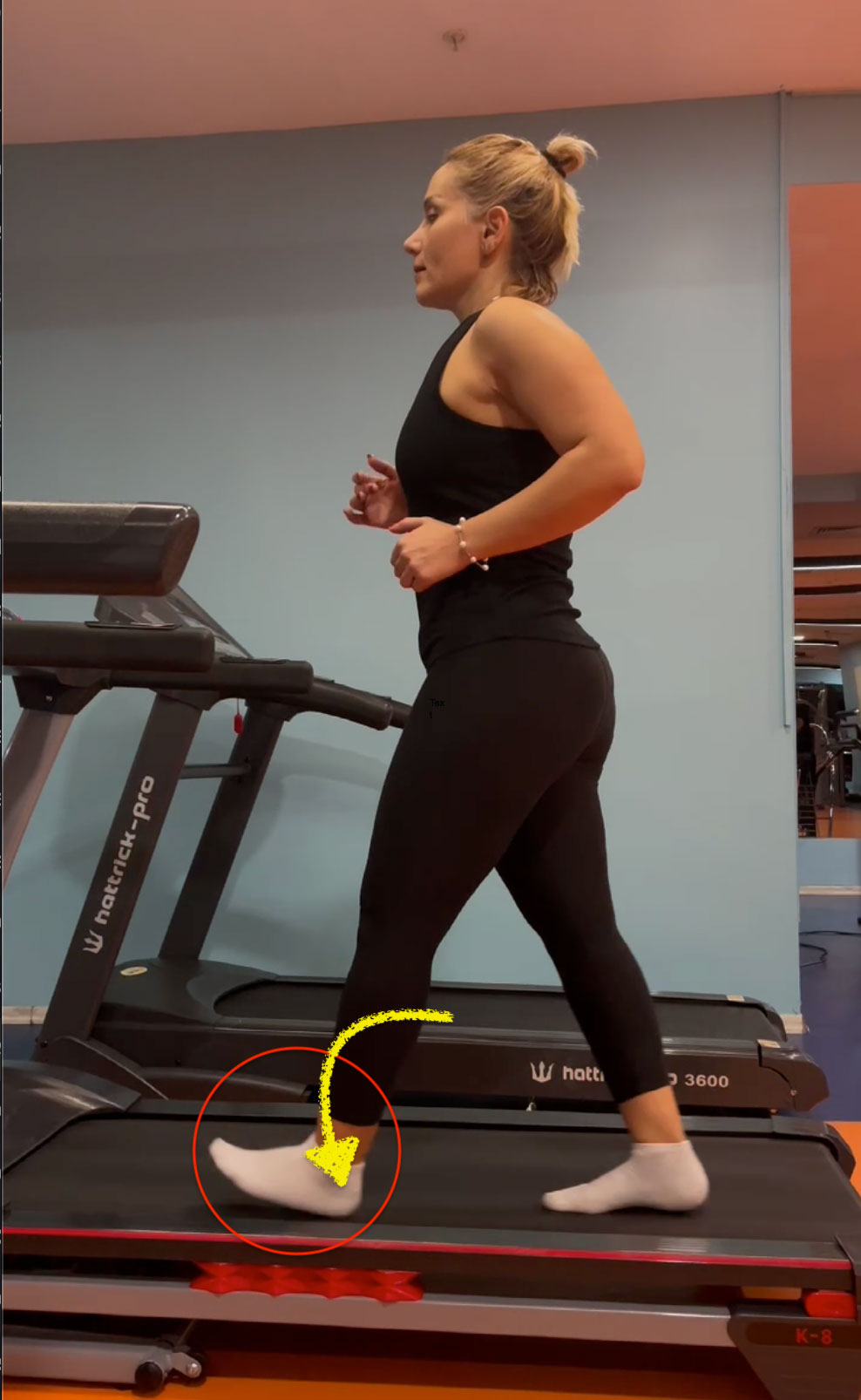
The initial contact of the heel with the ground, initiating the stance phase.
The moment the toes leave the treadmill surface, the Stance phase ends and the Swing phase begins.
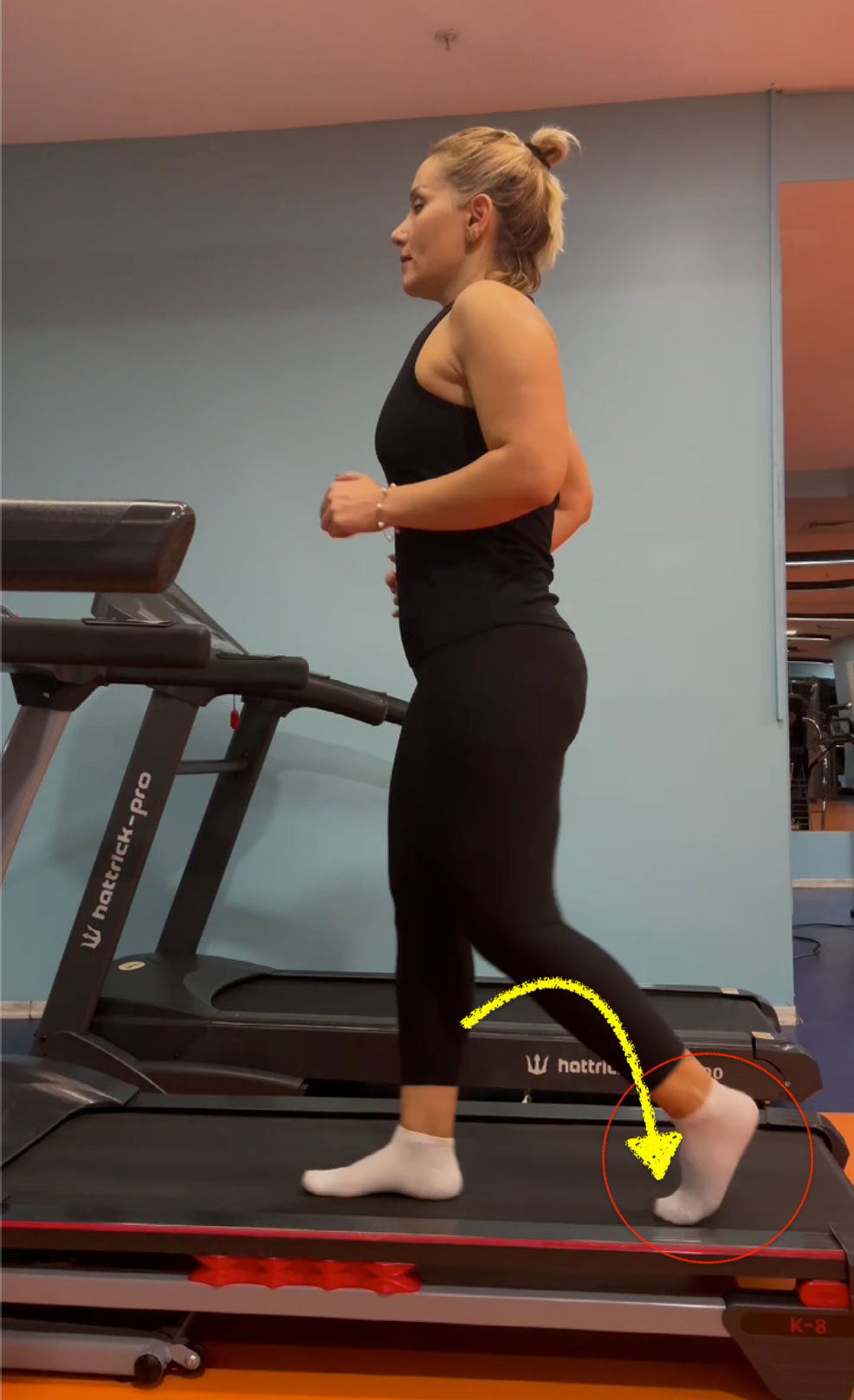
A complete cycle of movements during walking that starts from the contact of the heel of one leg with the surface of the treadmill and ends with the contact of the same heel again. This cycle is divided into two main phases: stationary phase and oscillatory phase.
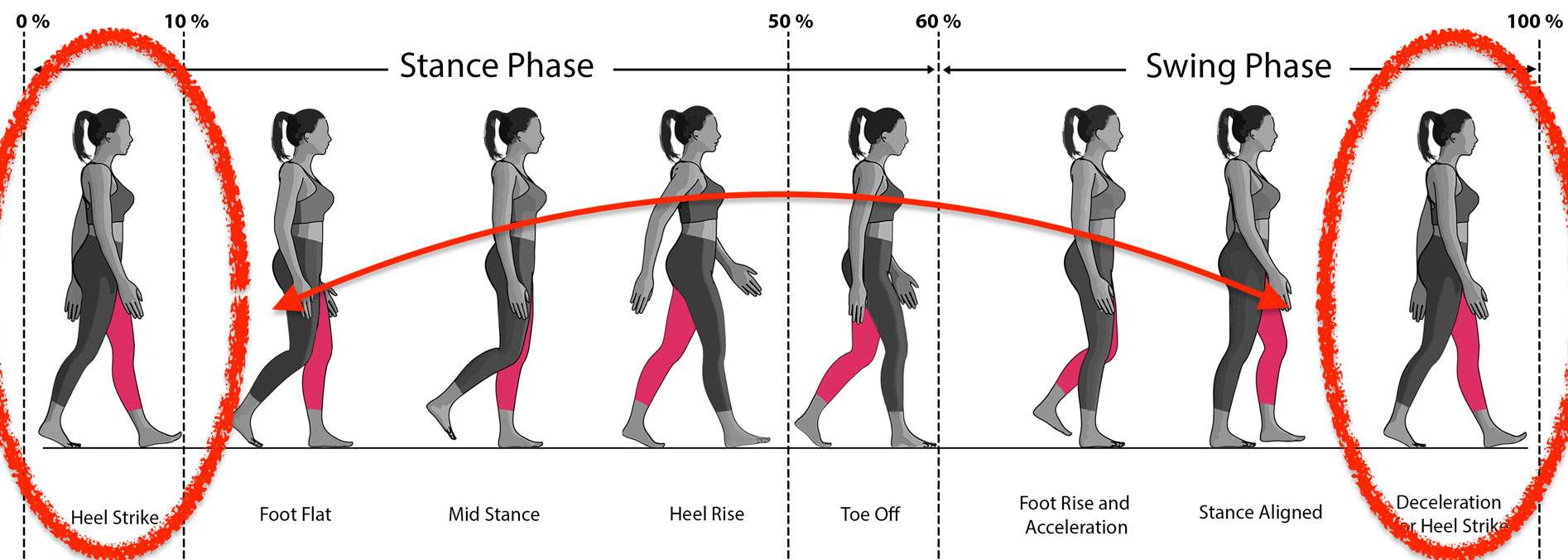
Stance Phase:
Wwhen the foot is on the surface of the treadmill and is in charge of support and propulsion. This phase starts with heel strike and ends with toe-off. This phase covers approximately 60% of the cycle.
Swing Phase:
when the foot leaves the surface of the treadmill and moves forward to prepare for the next step. This phase begins after toe-off and ends with the heel hitting the treadmill again, which covers about 40% of the cycle.
For example, the stationary phase of the right leg is when the foot is on the surface of the treadmill, but on the other hand, the swing phase is when the foot is not on the surface of the treadmill. The static phase interference of two legs is called double support.
Double Support
During a walking cycle, there are two periods of dual support where both feet are in contact with the treadmill surface and provide stability. In contrast, single support is when only one foot is on the surface of the treadmill.
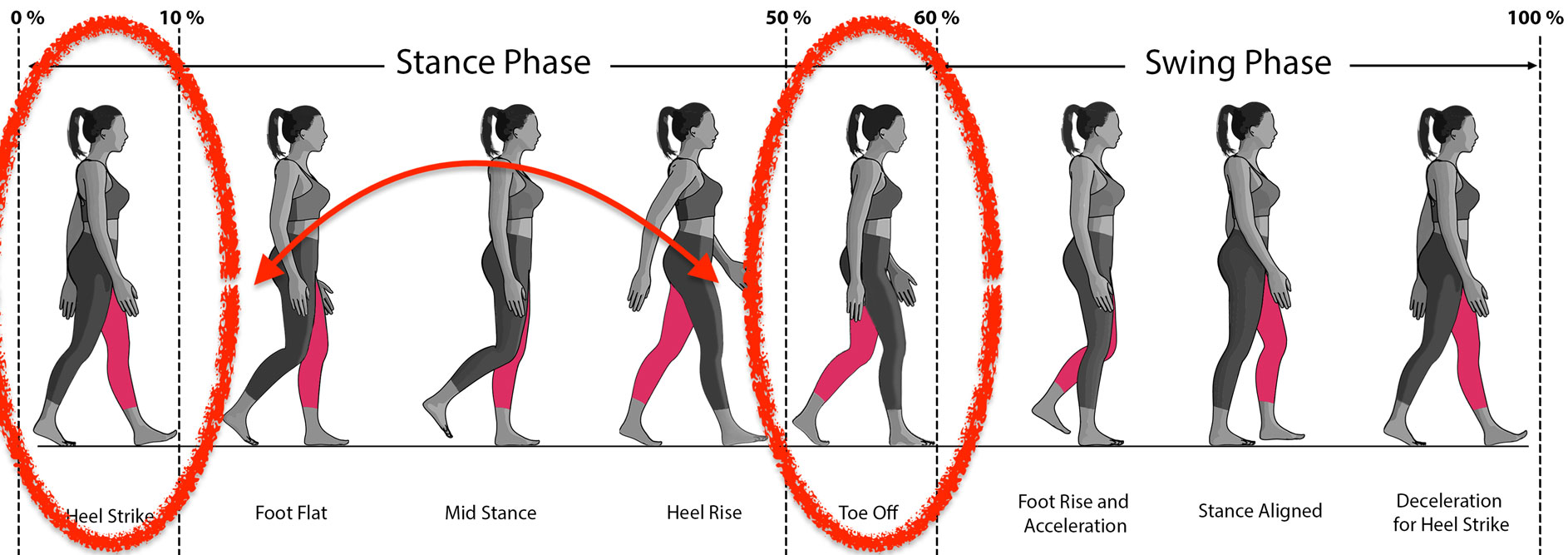
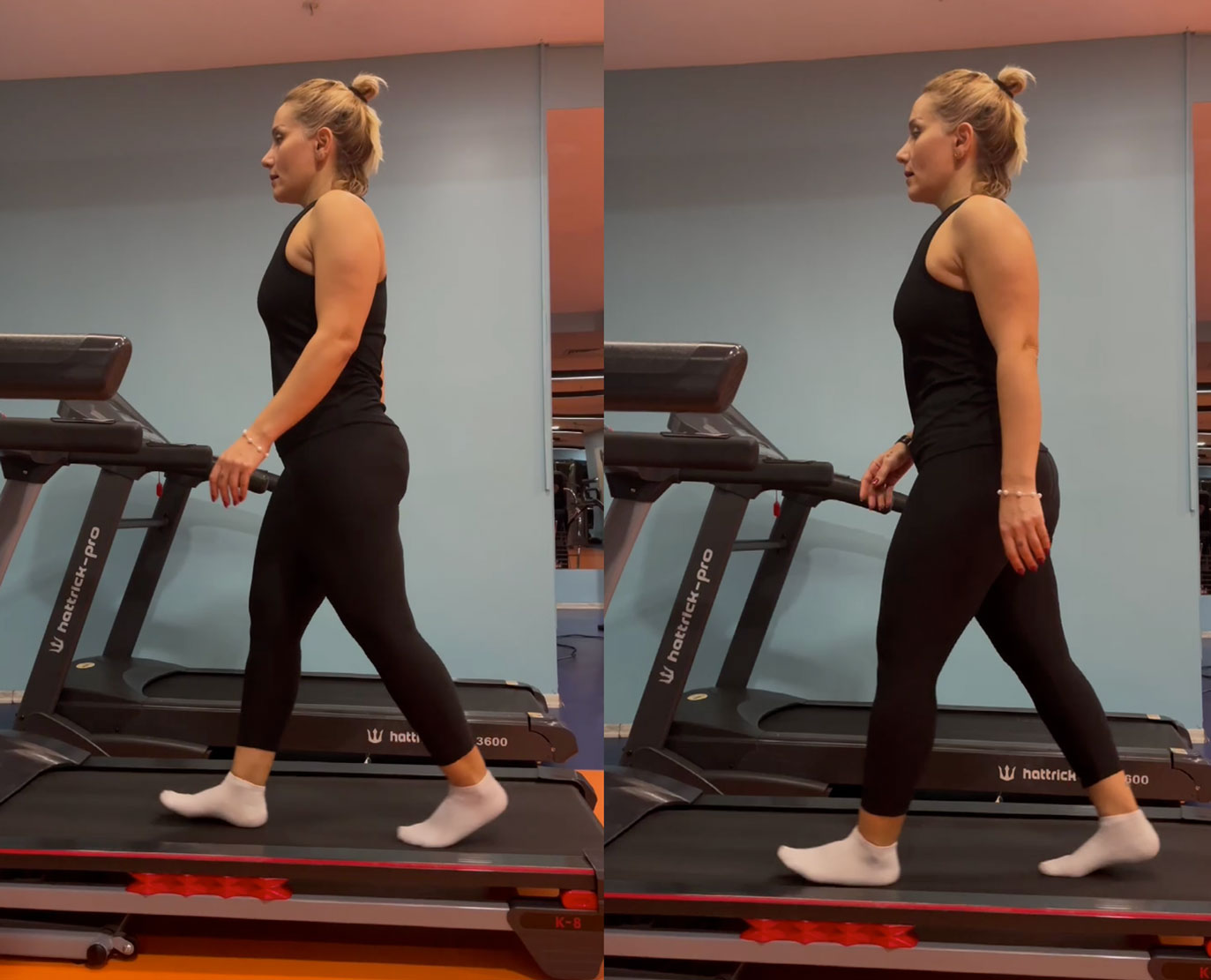
In the images above, both of the person's feet are in two specified positions on the treadmill surface at the same time, which represents the Double Support periods.
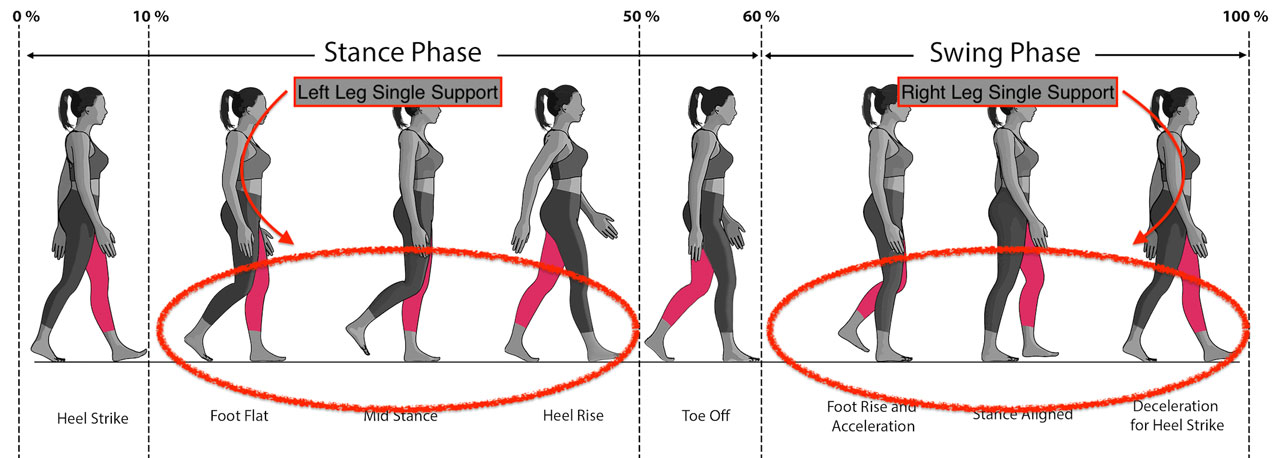
In this image, there is only one person's leg in the specified positions on the treadmill surface, which represents the Single Support periods.
Step and Stride Definitions
Each cycle consists of two steps, defined as the movement from heel strike of one foot to heel strike of the opposite foot. Together, these steps constitute a Stride (Cycle), which is the complete distance covered in one cycle of movement.

Time and distance measurement
For gait analysis, time and distance related to each of the following parameters should be measured. These parameters are calculated as an average during Gait Cycle periods and are presented in the table below.
• Cycle Time: The Total time for one movement cycle.
• Step Time: The time interval between successive heel strikes of alternate feet.
• Stride Time: The duration of one full stride.
• Swing Time: The time taken for the swing phase.
• Stance Time: The time allocated to the stance phase.
• Stride Length: The distance covered during one complete stride.
• Step Length: The distance between the heels of opposite feet meeting, which in normal gait is usually half the stride length.
Performance Metrics
• Cadence: Number Steps Taken every minute that shows the rhythm of walking or running.
• Step Count: The total number of steps taken in a specific time period, often recorded with wearable devices.
These terms help break down the science of walking into clear, measurable parts, giving experts the tools to improve rehab plans, prevent injuries, and boost performance.
But how do professionals turn these terms into action?
[Next up: Gait Analysis Methods]
| All Rights Reserved | FlexiTrace Developers LTD